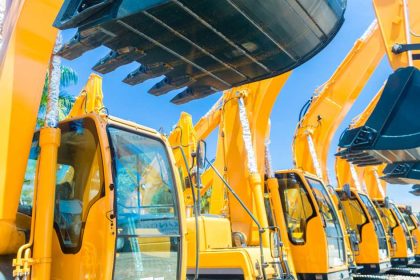Australia’s peak construction group say the chronically shorthanded industry will need a massive influx of tradies before the year is out to keep up with housing demand.
In their latest Future of the Workforce report, Master Builders Australia is forecasting no end in sight for worker shortages that have placed a cap on productivity as the country scrambles to make good on their housing promises.
Taking a closer look at the current state of construction, the group predict Aussie worksites will need 130,000 tradies on the tools within the next three months just to fill shortages, and even more will be needed to replace those who leave.
“If the workforce can rapidly increase from 1.37 million to 1.5 million, then the industry may be able to meet the targets of the National Housing Accord for 1.2 million new homes by the end of 2029 by the skin of its teeth,” reads the report.
While it might sound like a tall order, the group seemed optimistic it could be done, providing the government got on board with ‘necessary’ policies that would pave the way forward.
Despite the time crunch, Master Builders CEO Denita Wawn said there was no “quick fix” to the critical worker shortage problem.
“It will require a holistic approach across Federal Government portfolios from migration, skills and training through to industrial relations,” she said.
“Proposed solutions include increasing trade apprenticeships, leveraging skilled migration from similar regions, and fostering a diverse, inclusive culture to attract new talent from across the economy.”
The bulk of the group’s solution seemed to be focused on attracting migrant workers, with the report calling for a streamlined visa process, a lower English-language skills bar and the reduction of the visa sponsorship levy.
But Wawn also said recent pay laws and the contentious “Closing Loopholes” act that saw subcontractors subject to stringent employee-like pay structures should be watered down to make way for more work.
“There is a strong pipeline of work for the industry across the housing, commercial and civil sectors, presenting a great opportunity for people to join,” she said.
“While it is a significant number, this presents an opportunity for growth in an industry that is pivotal to the nation’s economic success.”
Where are all the workers?
While discussions around tradie shortages are nothing new, the repeatedly dire figures are surprising considering construction is the country’s second-largest employer, employing one in every 11 Aussie workers.
According to independent economist Tarric Brooker, the sector has even far outpaced the county’s population, growing in size by 126 per cent since 1994.
So why are we falling behind?
Well, it seems there are enough bodies in the industry, but most of them have swapped the toolbelt for a suit and tie, leaving tradies on the tools shorthanded as they flock toward desk jobs.
Earlier last month, RLB’s Oceania director of research, Domenic Schiafone, said this bloated ‘top heavy’ sector has gotten so bad that it has put the industry at odds with its own construction goals.
“In 2003, professional workers accounted for 28 per cent of the construction workforce. By 2023, this had risen to 38 per cent,” he noted.
As a result, productivity has taken a nosedive in what the AFR’s Michael Belby observed as an industry “suffering from an imbalance of too few workers on the ground and too many in the office”.
“The growth in professional employees – professionals with tertiary degrees and building technicians with advanced diplomas – surged, rising 125 per cent over the two decades from 242,900 to 547,300”, Bleby wrote.
“But the annual output per professional worker fell 17.2 per cent to $470,900 from $568,900”.







